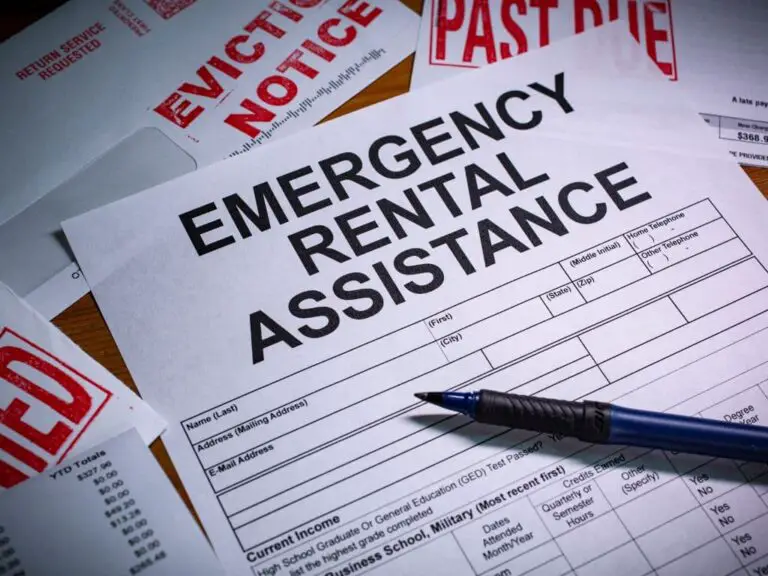What Is the Average Number of Years a Person Lives in a Nursing Home?
As people live longer, more Americans will spend time in a nursing home during the later years of their lives. Understanding what to expect regarding the average length of stay in a nursing home can help families plan for potential long-term care needs.
The average length of stay in a nursing home, based on a study of 1,817 decedents, is approximately 13.7 months. However, the median length of stay is shorter, at 5 months. According to the CDC, the average length of stay is around 2.3 years. A minority of individuals (10-20%) stay for more than 5 years.

What Is the Average Length of Stay in a Nursing Home in the United States?
According to the Centers for Disease Control and Prevention (CDC), the average length of stay for older adults in a nursing home is 835 days, or around 2.3 years. However, there is significant variation among individuals, with over half of nursing home residents staying less than 3 months, and 10-20% staying more than 5 years.
Some key statistics on nursing home lengths of stay:
- 53% of nursing home residents die within 6 months of admission
- 65% of residents stay less than 1 year
- Median length of stay is 5 months
- 10-20% of residents stay more than 5 years
So while a few years is the overall average, most older adults spend relatively brief periods in nursing homes, while a smaller proportion reside there for many years.
Here is a table with key data points on the duration of nursing home stays.
Duration of Nursing Home Stays
| Statistic | Result |
|---|---|
| Total number of nursing home decedents studied | 1,817 |
| Mean age at admission | 83.3 years |
| Gender | 59.1% female, 40.9% male |
| Race/Ethnicity | 81.5% White, 14% Black, 2.9% Hispanic |
| Mean length of stay | 13.7 months |
| Median length of stay | 5 months |
| Range of lengths of stay | 0 – 121 months |
| Percent with stays < 6 months | 53% |
| Percent with stays < 1 year | 65% |
| Percent with stays > 5 years | 10-20% |
This table summarizes key data points on the duration of nursing home stays for the sample of 1,817 nursing home residents included in the research study. The data shows significant variation in lengths of stay, though the median was only 5 months.
What Factors Influence the Average Length of Stay in a Nursing Home?
A number of factors impact how long an older adult will live in a nursing home, including:
The Resident’s Age
Younger residents (under age 80) generally have longer stays than older residents. Those admitted at advanced ages often have multiple chronic conditions and limited life expectancy.
Health Condition
Residents with chronic progressive illnesses like heart disease, COPD, or Alzheimer’s tend to have longer stays. Those with rapidly declining conditions like cancer have much shorter stays.
Functional Status
Residents with more dependency in activities of daily living (bathing, dressing, eating, etc.) at admission tend to stay longer. Those more independent initially tend to have shorter stays.
Financial Resources
Residents with greater financial resources can pay for more care services and amenities, enabling them to stay longer. Poorer residents may exhaust their funds quickly.
Family Support
Residents with more family involvement and support are often able to return home after rehabilitation or temporary illnesses. Those lacking family support tend to stay longer.
Marital Status
Married residents have shorter stays on average than widowed or never married residents, likely due to increased family support.
What Is the Cost of Living in a Nursing Home?
The average cost for a private room in a nursing home is around $7,500 per month, but can range from $5,000 to $10,000 per month depending on location, size, and amenities. Costs may include:
- Room and board – covers room, meals, snacks, utilities
- Medical care – on-site nurses, doctors, medications
- Personal care – bathing, dressing, toileting assistance
- Rehabilitation – physical, occupational and speech therapy
- Activities and entertainment – exercise classes, arts, trips
- Housekeeping and laundry – cleaning rooms and washing clothes
Additional services like specialized dementia care, extra therapy, and customized activities can add hundreds more per month.
Higher costs are typical for larger rooms, expanded care services, and luxury amenities like spa services and fine dining. Most residents rely on Medicare, Medicaid, long-term care insurance and/or personal savings to cover expenses.
What Types of Care Are Provided in a Nursing Home?
Nursing homes offer a variety of health and personal services to residents, which may include:
- Skilled nursing care – wound care, medication management, disease monitoring
- Rehabilitation services – physical, occupational and speech therapy
- Personal care assistance – with bathing, grooming, dressing, eating
- Nutritional support – meal planning, special diets, feeding assistance
- Memory care services – activities and daily care tailored for dementia
- Palliative and hospice care – symptom relief, pain management, comfort care
- Social services – counseling, care planning, advocacy
- Transportation – for medical appointments and errands
The level of care provided depends on the resident’s needs and health conditions. Many nursing homes have special units dedicated to rehabilitation, dementia and end-of-life care.
What Activities Are Offered in Nursing Homes to Keep Residents Active and Engaged?
To maintain physical strength, cognitive ability and emotional health, nursing homes offer a variety of stimulating activities and entertainment:
- Exercise – strength training, tai chi, water aerobics
- Creative arts – painting, crafts, music and dance
- Cognitive fitness – trivia, word games, current events discussions
- Social events – parties, concerts, holiday celebrations
- Spiritual activities – religious services, meditation, prayer groups
- Nature and outdoors – gardening, walking clubs, birdwatching
- Technology access – computers with internet, virtual reality games
- Community outings – restaurants, museums, shopping
Activities are tailored to residents’ interests and abilities. Participation in activities has been shown to improve quality of life and slow functional decline in nursing homes.
How Does the Quality of Life in a Nursing Home Vary?
The overall quality of life in a nursing home depends on several key factors:
The Facility
- Clean, homelike environment
- Sufficient staff to resident ratio
- Range of care and activity options
- Customization to individual needs and choices
The Staff
- Compassionate, competent caregivers
- Respectful communication and relationships
- Attention to comfort, dignity and independence
The Residents
- Sense of community with peers
- Participation in meaningful activities
- Maintaining autonomy over schedule and space
When choosing a nursing home, visiting potential facilities and talking to staff and residents can provide insight on which will best suit a loved one’s needs and preferences.
How to Choose a Good Nursing Home for Your Loved One?
When looking for a quality nursing home for a family member, key factors to consider include:
- Location – close enough for family visits.
- Specialties – target any specific health conditions like dementia.
- Staffing and ratings – look for sufficient staff and high marks on care inspections.
- Services offered – ensure needed medical care and activities are available.
- Affordability – accept payment sources like Medicaid or long-term care insurance.
- Resident profile – find peers with similar interests and backgrounds.
- Family involvement – look for a facility that encourages family participation.
- Facility tour – visit to assess cleanliness, safety and hominess.
- Resident interactions – observe staff caring for and engaging with residents.
Taking time to research options and visit facilities can help identify the best nursing home match for a loved one’s needs, preferences, and budget.
What Are the Financial Implications of Long-Term Care in a Nursing Home?
With average monthly costs in the thousands of dollars, an extended nursing home stay can have major financial consequences. Planning ahead is critical. Options to fund long-term care may include:
- Long-term care insurance – pays a portion of costs per day based on policy limits.
- Medicare – covers 100 days of skilled nursing care after a hospital stay.
- Medicaid – covers nursing home care for low income individuals.
- Personal savings – may quickly be depleted by nursing home expenses.
- Reverse mortgage – allows tapping home equity to pay care costs.
- Family support – relatives may contribute funds or time to care.
- Veterans benefits – some programs help with costs for qualifying veterans.
Consulting with a financial advisor can help analyze how to optimally tap into different resources to fund anticipated nursing home care needs.
How to Plan for Long-Term Care in a Nursing Home?
Key steps in planning for potential nursing home care include:
- Have frank discussions – openly talk about care preferences with family while still able.
- Research costs in your area – factor estimated expenses into financial plans.
- Evaluate insurance options – compare long-term care insurance policies and costs.
- Clarify Medicare coverage – understand skilled nursing facility benefits and limitations.
- Review Medicaid eligibility – learn income/asset rules for your state if funds are limited.
- Inspect facilities – visit and compare several nursing homes you may consider.
- Complete legal documents – have advance directives specifying care wishes.
- Organize records – gather medical history, insurance cards, financial documents.
- Designate helpers – assign family/friends to assist with care, finances, legal issues.
Proper planning provides you and your loved ones peace of mind that appropriate nursing home care will be available and affordable when the need arises.
Conclusion
The average length of stay in a nursing home is around 2-3 years, but most residents remain for relatively brief periods ranging from weeks to months. Length of stay depends greatly on the resident’s health and support system. While nursing home care is costly, planning ahead and utilizing all available resources can help cover expenses. Exploring facilities in advance can help find the best option providing quality care tailored to your loved one’s needs and preferences when long-term care becomes necessary. With proper planning, nursing homes can serve as a vital source of support and community for older adults.
Frequently Asked Questions
-
What is the average number of years a person lives in a nursing home?
Participants were on average 83 years old when they transferred to a nursing facility. While the median of five months was for those who died before their death, the average stay was only 13.7 months. The study found that fifty-three percent died in six months for nursing home residents.
-
Does Medicaid pay for nursing home in Iowa?
Iowa Legal Aid in The News: In general, individuals are eligible for Medicaid nursing home care coverage if they have a monthly income of $2,382 and $2,000 respectively.
-
What is the monthly income limit for Medicaid in NC?
Full Medicaid income limits are $1,012 for singles and $1372 per couple. Individuals or couples whose income is higher than these limits must pay a medical deductible to be eligible for full Medicaid. The income amount that exceeds the income limit is called the deductible.
-
Does Medicaid pay for assisted living in Alabama?
Alabama Medicaid offers many services for those who require skilled care. However, it does not cover assisted living. This is because one has to be able to manage their own affairs in order to reside in such an environment. Residents may require medication reminders or assistance with meal preparation, but they can live independently.
-
Does Medicaid pay for assisted living in Iowa?
Iowa Medicaid doesn’t cover assisted living. However, the state offers waivers, referred as Home and Community Based Services, (HCBS). Some Iowa facilities may not accept waivers. This is something to keep in mind when you are looking for assisted living for your loved one.
-
What is the average cost of assisted living in SC?
Assisted Living/Memory Care According to Genworth’s 2020 Cost of Care Survey (2121), the cost of living in an assisted-living facility in South Carolina is $2,200 per month at the lowest end and $5,475 at the highest end. The statewide average however is $3,988 per month.
-
Who qualifies for assisted living in NC?
Anyone over 65 years old and of low income is eligible. You do not need to be currently receiving SI in order to be eligible for Special Assistance.
-
Does Medicare cover assisted living in Iowa?
Short answer: No, Medicare doesn’t cover assisted living costs in Iowa.
-
What is considered low income in South Carolina?
The federal poverty income threshold for 2018 was $27,308 per child for single parents and $25,465 for families of four. A family’s income total is below the threshold and it will be considered to be in poverty.
-
How does Elderly Waiver work in Iowa?
The Elderly Waiver Program is for people older than 65. This program covers personal and home care services as well as financial support. This program covers people who need in-home medical care.
-
Does Medicare cover assisted living in North Carolina?
Is Medicare covered for assisted living in North Carolina? Short answer: Medicare doesn’t cover assisted living costs in North Carolina. As assisted living facilities can be considered a residential and not a medical setting (think of nursing homes).
-
Is it better to age at home?
Seniors who age in place have a better quality of their lives, and this can lead to increased physical health. They are also protected from viruses and bacteria that can be found in senior housing facilities. This reduces their risk of developing serious illnesses. Savings on Living at Home
-
What is the most expensive assisted living?
This analysis included both the most costly and the least expensive state for assisted living. New Jersey is the most costly place to live in assisted living with an average monthly cost $5,893 per person.
-
Does Medicaid pay for assisted living in North Carolina?
The main Medicaid program in North Carolina does not cover home or assisted-living facilities, nor does it pay for nursing home care. However, it has a few programs for waivers and other assistance that could help to pay these costs.
-
Who qualifies for assisted living in Alabama?
Who is eligible? The applicant must be at least 65 years old, blind, or with a disability, live in a limited financial and citizenship situation. Some applicants may apply online through the Social Security Administration website. For assistance in person, applicants must go to their local SSA office.






